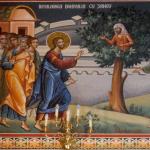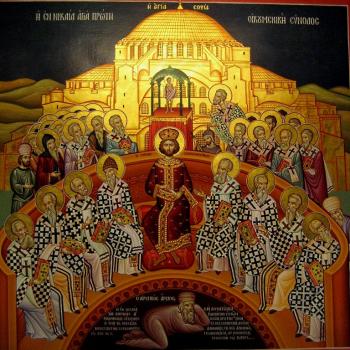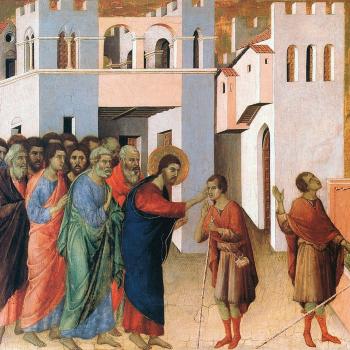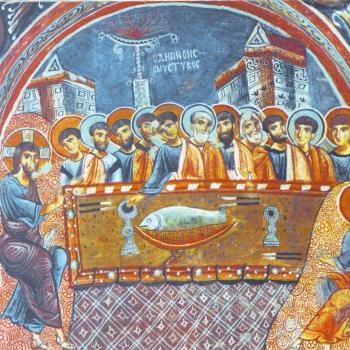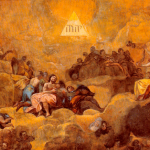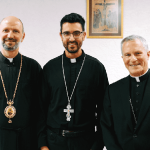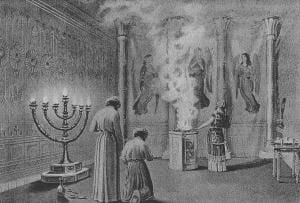
In the 16th century, Rabbi Isaac Luria presented his own developed insight on the Kabbalah. He established a new tradition which would become one of the most influential representations of the Kabbalah for centuries. He was more systematic than most of his predecessors in his engagement with the Kabbalah, allowing him to establish new ways of discussing the relationship between God and creation. In doing so, he took into consideration and addressed the experiences of the Jewish people in his time, giving them a way to understand their long history of exile from the land of Israel (and with it, the expulsion of the Jews from Spain). He did this by suggesting that God, in various ways, experienced the characteristic of being an exile himself.
Luria used for his ideas many of the basic elements presented by Kabbalists before him, such as the notion of the Sefirot, or the ten attributes and emanations or lights of God. The foundation of the ten Sefirot is the hidden, obscure, incomprehensible nature of God, the Eyn Sof (or Ein Sof), the Divine Nature as it exists in itself outside of any external manifestations of God. According to Lurianic thought, the first form of God’s exile can be found in and with the notion of the Eyn Sof: in it, God recedes from creation, both in a positive sense, but also in a negative sense; in the positive sense due to it representing God’s transcendence, but in the negative sense because it can be seen as a kind of a self-limitation God established for himself. God does not impose himself upon creation but rather limits himself and his control of it by establishing the distinction between his hidden transcendent essence and the Ten Sefirot. Humanity, Luria said, interacts with the Sefirot, influencing them and how they interact with each other as well as with the rest of creation, but they cannot come in direct contact with and comprehend the Eyn Sof.
Related to the Sefirot is another notion of exile, one which has clear Gnostic overtones. In establishing creation, Luria suggested that the ten Sefirot shared a refracted form of God’s “light” to creation. But this was more than what the creation could take. It was meant to dwell within creation and raise it up, but instead, creation broke apart in sin, and the various aspects of God’s light found itself trapped in creation, in various “shells” which prevent the light of God from coming together and bringing the whole creation together as one with God. The shells “trapped” the various lights of God in creation, representing the darkness of evil which manifested itself in creation. This created a kind of internal schism within God, between his light (which is trapped), his Sefirot, and the Eyn Sof.
This schism within God is connected with the fall of Adam, the original primordial man, who was made in the image and likeness of God. Adam was meant for great things, representing within himself the pattern of the Ten Sefirot. God, at least in relation to the Sefirot, is affected by what humanity does. The more humanity sins, the more the Sefirot are weakened (and interact poorly with each other). On the other hand, the more humanity repents and turns back to God, the more the Sefirot become energized and properly interact with each other. The goal of humanity in history, the goal of Israel in history, is to release all those sparks of light from the shells which have them trapped and help restore the proper balance of the Ten Sefirot. This meant that Israel, who serves God and is meant to fulfill his purpose in history, will have to follow God (with his presence in the Shekinah, which is either the last and lowest of the Sefirot, or the representation of their union together in the world) into the world, find the shells, and release what was trapped in them. The exile of Israel comes, in part, as a result of Israel’s failure to follow the Torah, but it also serves as a way to make Israel fulfill its destiny by being spread throughout the world. That way, the people of Israel can find the various sparks of God and release them. Every place they do this, they not only fulfill a part of their purpose, but they find themselves released from that particular aspect of their exile. Thus, putting this all together, Chaim Vital (a disciple of Luria) wrote:
Through the sin of Adam, the first man, good and evil were fused together. All the souls of holiness fell into Shells, and they do not have the strength to extricate themselves without the compassion of God. For ‘In all their afflictions He too is afflicted.’ The Divine Presence [Shekhinah] of His power goes into exile with Israel into the midst of the Shells. When the Divine Presence enters their place, She gathers up the souls from there. Behold there are seventy Shells, corresponding to the seventy nations, and Israel needs to be in exile among all of them in order to gather up all the souls that fell into every Shell that is in them.[1]
As stated above, this double notion of exile reassured the Jews, as they begun to see a purpose for their experience, especially their most recent experience in Spain, as Alan Unterman explained in his anthology on the Kabbalah:
There is an aspect of exile in God Himself, in His self-contraction and withdrawal, and also in the entrapment of the Sparks of the divine light within the evil dimension of the Shells of the broken vessels. This emphasis on exile spoke to a ready audience of those who were living in the shadow of exile, after the expulsion from the Iberian peninsula.[2]
Since God is said to experience exile, it is also said that God shares in the suffering of the experience of the Jews in their own exile. The suffering will end once the garment of sin, the shell, which holds God in exile, is removed:
I have received a teaching from my master Rebbe Israel Baal Shem Tov with regard to all suffering, whether physical or spiritual, which people experience. They should focus their mind on the idea that God Himself, may He be blessed, is also in this suffering but He is clothed in a garment there. When one realizes this the garment is removed and the suffering ceases. [3]
Thus, to summarize, Gershom Scholem explained
Luria’s new myth is concentrated in three great symbols, the tsimtsum, or self-limitation of God, the shevirah, or breaking of the vessels, and the tikkun, or harmonious correction and mending of the flaw which came into the world through the shevirah.[4]
We cannot ignore that there is a sense that God’s exile came in part, because of the sins of humanity. The presence of God, the Shekhinah, goes into exile due to the sins of the people of Israel. Then the people of Israel, if they do not repent, are thrust into exile themselves. The people of Israel, and with it the Shekhinah, will find their exile over when they have sufficiently repented, and so corrected themselves and freed themselves (and the presence of God found in exile) from the exile itself:
It is appropriate for a person to arouse himself in repentance when he considers that the Shekkinah is exiled on his account, as it is written: “And for your transgressions was your mother put away” [Is. 50:1]. The return of the Shekhinah from exile is dependent upon our repentance. Ought not each and every person arouse himself to repent in order to lighten Her yoke of exile and to shed light on the ways in which She is blemished, how we injure Her and prolong the exile, as we explain in “The Gate of Fear?” [5]
Though the people of Israel are reminded of their sins, and their failures, the fact that their exile binds them with God, and God with them, so that in some way God is said to suffer the exile with them, the Lurianic system offered an insight, however complicated and however absurd it might seem, which gave comfort to the people of Israel in their own exile:
As an experience of God affecting Himself, or at least in the manifestation of His essence, exile takes on the enormous dimensions which it had obviously assumed for the Jews of those generations. It was the very boldness of this gnostic paradox – exile as an element in God Himself – that accounted in large part for the enormous influence of these ideas among the Jews. [6]
Certainly, elements of this view conflict with traditional Christian theology. Gnostic teachings which suggest God is somehow trapped by a part of his creation, even if they are not tied with Gnostic teachings of an evil creator-God who traps the sparks of light from the good God, stand contrary to the Christian understanding of the divine nature. God cannot be trapped nor overpowered. Likewise, God does not have parts, so it cannot be said that parts of God can trapped by creation. But this does not mean there are not great insights within this perspective, insights which Christians should consider and see if, transformed with the fullness of Christian revelation, they might not help inspire Christians in their understanding of history and the mission of the church in the world.
For example, Christians can agree that God, in the act of creation, willingly limited himself, so that instead of imposing himself upon creation as an absolute who controls creation by a force of will, he has granted creation the independence of being an other which acts in relation to him, with a will of its own. Indeed, this seems to follow the revelation of God given to us by Jesus at the cross, that God, out of love, empties himself, setting aside his absolute nature and power, so that the created other can then encounter him and respond to him as it will, both in hideous, evil acts (manifested in the crucifixion) and in acts of love (when people respond to the kenotic act of Christ by becoming his disciples).
It is in the incarnation, and in the formation of the church, that Jewish mystical interpretations of exile might find connections with and a way to inspire the Christian faith. For the Son of God, the Logos, emptied himself, not only to become man, but to partake of human history and allow himself to share with it in and through the church. The church is the mystical body of Christ, and through Christ, the church continues manifesting the work of God in history. God has a special presence with the church. But what happens when the leaders of the church sin? What happens when the people of the church sin? The church suffers from the consequences of its sin. The people of God lose, in some fashion or another, their connection with the presence of God in them, and through it, become as it were exiles in the world. But because the church is also the continuation of the presence of Christ in history, and so the continuation of the incarnation and the special presence of God in the incarnation in history, when the church suffers the consequences of its sins, when it loses itself and its relationship with God, one can mystically state there is a kind of exile which the church suffers through, and with it, God in the church participates in that exile. Thus, through the incarnation, the self-emptying of God allows God to establish the church, and in the church, to suffer with the church what it suffers in time. The sins of the people, the sins of the church, cause God to go along with them in that exile, not because God is in exile with himself in his divinity, but because God shares with and is in solidarity with his church.
It is not just with his church that God shares in the exile of sin. He does so in a special way with his church, the way Kabbalists think God does with Israel, but he also shares in the exile of all humanity as the result of the sin of Adam by becoming man. He entered into fallen creation, established his presence in creation, and showed his all-compassionate love for creation, so that it can be said he came to share in humanity’s exile from paradise, as represented in the story of the fall in Genesis. God participates in the exile of humanity for the sake of humanity, inversing what the Lurianic system suggests, but yet connects God with exile and that exile with human activity. And it is God, then, who does the rescuing, freeing humanity from bondage of sin. The words of Jesus on the cross, when he said, “My God, May God, why have you forsaken me” can be read as demonstrating this point: it is not that Jesus as God found himself abandoned by God, but rather humanity, because of its sins, had felt itself abandoned by God as it was exiled from paradise. Jesus, in his words, was pointing to the reality that out of his great compassion and love us, he experienced the reality of our exile in his humanity, so that he could overcome that exile from within and lead us all back to God, showing that God has not abandoned us despite the way we abandoned him. Jesus is the one who frees us from the shells of sin and leads us back to God so that we can partake of eternal life. The shells, then, do not surround God, but us. They are overcome by the work of Jesus, so that we can be released from them and find ourselves once again seeking after and cleaving to God.
Wherever we go, even in the pit of hell, God’s presence will be there, so that we can look for him and find him and await his work with us to free us from the shells we have put ourselves. It is not God who needs to be set free, it is us. And yet… and yet… there is a mystical sense that what happens to us in our exile happens to God, and this is the mystery which Jesus pointed to when he said whatever is done to “the least of these” is done to him. And there, we find another connection between God and Adam in the Kabbalah can be made to makes sense, and how we can say he is in exile, even if he not in exile from himself. For he is in exile as long as someone unjustly suffers in the world, for he is in solidarity with them. So long as we abandon those in need, we abandon God. He awaits with the least among us, and he wants to be set free with them. We must go and find him and set him free as we help the victims of the world. After all, the church is the mystical body of Christ. It represents Christ’s continuing work with creation, with the people in it, becoming his hands and feet in history. And when the people of the church fail to follow Christ, they will suffer the consequences of their sins, finding themselves placed side by side with the victims of sin. Then they will have the opportunity not only to set themselves free by repentance, but to then continue the work of Christ in history, setting free those he is in solidarity with, making sure that they receive the justice which they deserve. And in this way, we find the thoughts of Luria, though slightly confused with Gnostic overtones, still presents an idea which has validity and which should remind us of our duty to follow Christ out into the world.
[1] Alan Unterman, trans. and ed. The Kabbalistic Tradition. An Anthology of Jewish Mysticism (London: Penguin Books, 2008), 30 (Chaim Vital).
[2] Alan Unterman, trans. and ed. The Kabbalistic Tradition. An Anthology of Jewish Mysticism (London: Penguin Books, 2008), xxxvi.
[3] Alan Unterman, trans. and ed. The Kabbalistic Tradition. An Anthology of Jewish Mysticism (London: Penguin Books, 2008), 23 (Jacob Joseph Katz of Polonnoye).
[4] G. Scholem, “The Lurianic Myth” in Understanding Jewish Mysticism: A Source Reader. Ed. David R. Blumenthal (New York: Ktav Publishing House, 1978), 162.
[5] Elijah de Vias, “Beginning of Wisdom.” Ed. Jacob Poyetto in Safed Spirituality. Trans. and ed. Lawrence Fine (New York: Paulist Press, 1984), 95. (the Gate of Repentance)
[6] G. Scholem, “The Lurianic Myth,” 164.
Stay in touch! Like A Little Bit of Nothing on Facebook.
If you liked what you read, please consider sharing it with your friends and family!



